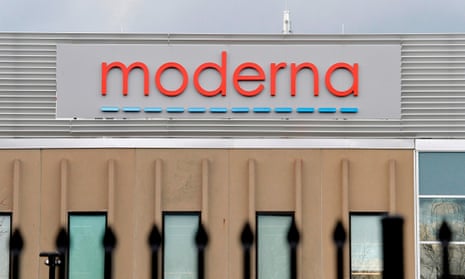The Food and Drug Administration (FDA) has authorized a vaccine developed by Moderna and federal researchers, the second Covid-19 vaccine to receive such approval for emergency use across the US.
The vaccine’s emergency authorization brings the second drug to prevent Covid-19 to the American public within a week, and millions of doses are expected to begin immediate distribution to health workers and long-term care residents.
Moderna’s vaccine is 94% effective at preventing Covid-19, and is authorized in adults 18 and older. The authorization comes after it was recommended by an FDA advisory panel of independent experts.
“With the availability of two vaccines now for the prevention of Covid-19, the FDA has taken another crucial step in the fight against this global pandemic that is causing vast numbers of hospitalizations and deaths in the United States each day,” said Stephen Hahn, the FDA Commissioner, in a statement announcing the emergency authorization.
The vaccine developed by Moderna and the National Institute of Allergy and Infectious Diseases (NIAID) uses messenger RNA technology to introduce the body to the spike proteins coating the surface of the coronavirus.
“I would anticipate that we likely will see shots in the arm by the very early part of next week,” said Dr Anthony Fauci, the director of NIAID, to NBC earlier today.
Unlike the Pfizer vaccine, the Moderna vaccine deliveries will be managed by the federal government, using funding from Operation Warp Speed, the Trump administration’s program to quickly develop and disseminate Covid-19 vaccines and treatments.
Pfizer’s vaccine, the first to prevent Covid-19 authorized in the US last week, uses the same technology. Both companies are expected to apply for full approval for the vaccines in the coming months. Federal authorities hope to vaccinate 20 million people before the end of the year.
The authorization comes as the first doses of a vaccine developed by Pfizer are administered to health workers and long-term care residents, after it was authorized by the FDA last week.
Several high-profile figures have already received the Pfizer vaccine, including the vice-president, Mike Pence, and the House speaker, Nancy Pelosi, on Friday. Joe Biden is due to receive his vaccine on Monday.
Moderna’s vaccine holds at least two distinct advantages over the first vaccine. It needs to be refrigerated, but does not require the ultra-cold -70C (-94F) required by Pfizer’s vaccine. That means the vaccine could be easier to transport in rural areas, and less susceptible to wastage. Further, Moderna’s data shows its vaccine appears to protect people against severe Covid-19, when it does not prevent the disease.
The authorization also comes as the virus continues to inflict a devastating toll on Americans. Thursday set a new record for daily deaths, when more than 3,500 Americans succumbed to the virus in one day.
A viewpoint article published in the Journal of the American Medical Association the same week captured the toll: “The daily US mortality rate for Covid-19 deaths is equivalent to the September 11, 2001, attacks, which claimed 2,988 lives, occurring every 1.5 days, or 15 Airbus 320 jetliners, each carrying 150 passengers, crashing every day,” wrote Dr Stephen Woolf and co-authors.
The authorization, a landmark achievement for modern medicine, is also a major achievement for Moderna. Before the authorization, the company had no products approved for use by the FDA. Before working on an mRNA vaccine for Covid-19, scientists at Moderna were researching mRNA technology primarily in cancers.

Moderna’s vaccine brings to 300m the number of potential doses to be administered to high-risk populations, 200m of which Moderna is contracted to provide to the federal government.
Because each vaccine requires a two-dose “booster” regimen, that means the US will have enough doses to immunize 150 million people, if it is able to effectively roll out one of the most ambitious immunization campaigns in the history of medicine. Moderna is relying primarily on subcontracted manufacturers to produce millions of doses of its vaccine.
Even with the monumental achievement of authorizing a second vaccine, scientists will still need to move forward on more vaccine candidates to provide the manufacturing capacity to reach another millions more Americans and people around the world.
That means the authorization of the second vaccine will not immediately bring about a return to normalcy, as it will take the better part of a year to immunize and distribute vaccinations to hundreds of millions of Americans.
Both shots will need to overcome high levels of vaccine hesitancy from a skeptical and weary American public, who for months have been bombarded by misinformation. Moderna’s vaccine may face an even higher hurdle, as the same White House which has disseminated Covid-19 misinformation played a role in its development.
The Moderna vaccine was found to be more than 94% effective at preventing Covid-19, in a trial of more than 30,000 patients. Moderna’s scientists said there were two allergic reactions in its trial, one in the placebo arm and another in a vaccine recipient.
In the vaccine arm, the allergic reaction was more than 60 days after the participant received the vaccine, and was found to be related to a separate medical procedure.
